Air Compressor Safety Valves: Protection and Performance
Air compressor safety valves are critical devices designed to protect compressed air systems against overpressure. These fundamental components act as emergency relief mechanisms that automatically activate when system pressure exceeds predetermined levels, releasing excess compressed air and preventing potentially catastrophic equipment damage.
At Pneumatig, we offer a wide range of high-quality safety valves specifically designed for air compressors, ensuring optimal protection of your investment and compliance with industrial safety regulations.
Operation and Technical Specifications
Air compressor safety valves operate under a simple but effective principle: they remain closed during normal operation but open automatically when pressure reaches a dangerous level. Key technical features include:
- Calibration pressure: Available in ranges from 7 to 30 bar (100 to 435 psi), depending on the specific system requirements.
- Construction materials: Primarily manufactured from brass, stainless steel, or special alloys to ensure durability and corrosion resistance.
- Connections: We offer models with various threaded connections (BSP, NPT) in sizes ranging from 1/4" to 2".
- Certifications: Our valves comply with American standards such as ASME Boiler and Pressure Vessel Code Section VIII and are UL/CSA certified where applicable.
Key Takeaways: Technical Specifications
- Available in pressure ranges of 100-435 psi (7-30 bar).
- Manufactured from durable, corrosion-resistant materials.
- Multiple connection options and sizes.
- Compliance with American safety standards and regulations.
Types of Air Compressor Safety Valves
There are several types of safety valves specific to compressed air systems, each with particular applications:
- Spring-loaded valves: The most common type, where a spring keeps the valve closed until pressure exceeds the spring force.
- Direct-acting safety valves: Respond immediately to pressure changes, ideal for primary protection of piston compressors.
- Pilot-operated safety valves: Offer greater precision and are especially suitable for higher capacity screw compressors.
- Tank safety valves: Specifically designed to protect pressure tanks associated with compressor systems.
Industrial Applications
Air compressor safety valves are essential components in numerous industrial environments:
- Manufacturing plants and machine shops
- Food and pharmaceutical industries (with specific stainless steel models)
- Construction and mining
- Power generation systems
- Petrochemical facilities
- Water treatment systems
Selection Criteria
Choosing the right safety valve for your air compressor must consider several critical factors:
- Compressor capacity: The valve must be properly sized for the compressor's maximum flow rate.
- Maximum working pressure: The valve should be calibrated approximately 10% above the system's normal maximum working pressure.
- Material compatibility: Consider the operating environment and potential presence of contaminants or moisture.
- Applicable regulations: Ensure the valve complies with specific regulations for your industry and geographic location in the USA, such as OSHA requirements.
- Maintenance: Evaluate the ease of inspection and periodic testing required by safety regulations.
Maintenance and Verification
Regular maintenance of safety valves is essential to ensure proper operation:
- Periodic visual inspection to detect signs of corrosion or damage.
- Functional testing at intervals recommended by the manufacturer (generally every 6-12 months).
- Calibration verification by qualified personnel or specialized services.
- Replacement according to manufacturer recommendations or when signs of wear are detected.
Remember that safety valves should not be used as quick release valves or for normal pressure regulation, for which specific pressure reducers are recommended.
Standards and Certifications
Air compressor safety valves must comply with various American standards:
- ASME Boiler and Pressure Vessel Code Section VIII
- ASME B16.34 for valves
- UL/CSA certification for specific applications
- NFPA compliance for certain environments
At Pneumatig, all our products meet or exceed these standards, providing maximum safety and reliability for your compressed air systems.

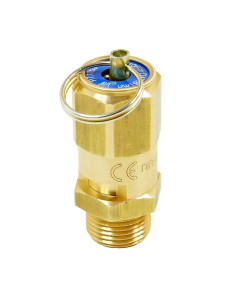
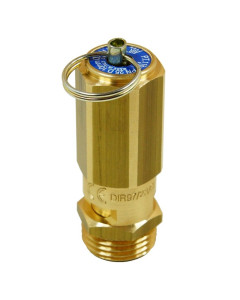
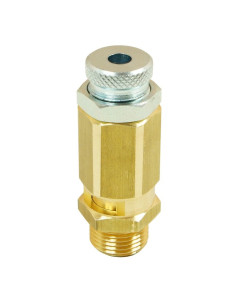
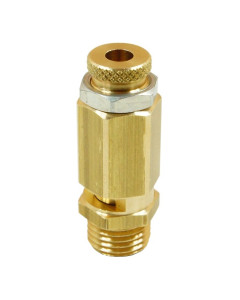
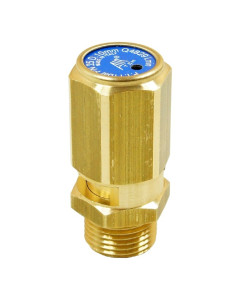
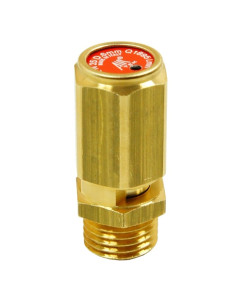
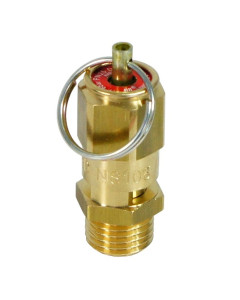
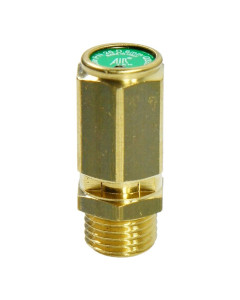
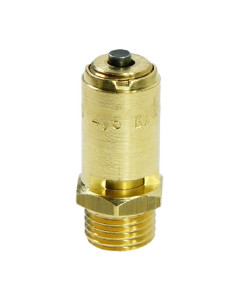
Login and Registration Form